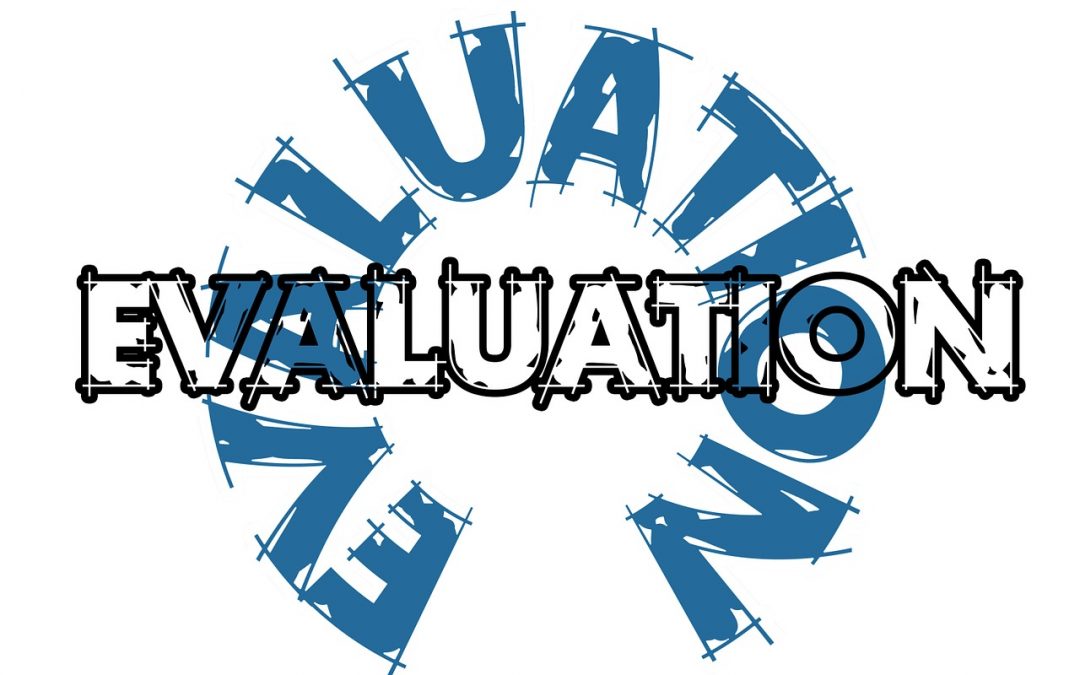
by Employment Screening Alliance | Oct 11, 2016 | employment background check
Employment Background Check | Double-Check: Re-Screening Employees
Employment Background Check | You’ve run a complete background check on all your employees. So you’ve got a safe, fully-vetted workforce, right?
Not necessarily.
While a thorough and professional background check provided a profile of each employee at the time he or she came on board, things may have changed. Times change, conditions change, and people change. And without occasional or regularly-scheduled follow-up background checks of personnel, problems may arise that could seriously impact your business.
Consider: Unlike candidates wishing to join your company, people you’ve already hired may now have access to highly-confidential information including your most sensitive files, phone records, business transactions, contact information, personnel data, and financial secrets. And what they do with such knowledge can seriously affect your company’s brand reputation and even its stability.
Also remember that your employees are in constant contact with your other staff, as well perhaps, with your vendors and your valuable clients. Misinformation, disinformation, innuendo, rumors, and outright lies spread by a disgruntled employee can decimate a business.
If an employee has developed personal problems since his or her initial background check – and you’re in the dark about them – your firm and your other employees could be in jeopardy.
For example, let’s take Susan. She’s been a great manager for five years, following thorough criminal, motor vehicle, and reference checks conducted when she applied for employment with you. Since then, her record’s appeared flawless – “appeared” being the operative term. In fact, she’s being given a promotion!
Actually, last year, Susan got in a tiff with another driver. She lost her cool and punched the other motorist. Someone called 911, the police showed up, and Susan was arrested for assault and battery. She was convicted and got probation.
But you never knew about it.
You also weren’t aware that Susan’s problems escalated. She continued to have anger issues and her significant other left her. Susan fell into deep depression as well as debt. Without a second source of income, she took a second job at night to pay her bills. And then she even began to occasionally steal from your company.
A re-screening could have uncovered the conviction, and may have nipped further problems in the bud. Instead, Susan’s problems have become your problems.
You may want to evaluate whether or not a follow-up background check is legally permissible, and may be prudent for an employee who may have come onboard before you implemented your current background screening policy and practices, and wasn’t screened as thoroughly as you would today.
If a re-screening uncovers nothing, it validates your initial decision to hire that employee, which may instill greater respect and confidence in your personnel security practices.
So consider running another employee background check when someone is promoted, switches departments, or if their last screening was long ago.
HireRight recently surveyed a number of its clients and 42% said they either presently rescreen employees or may begin rescreening employees in the future. The practice is most prevalent in the transportation sector.
Make sure you know your state’s laws before screening current employees. Include your position on subsequent background checks in your company policy, and distinguish between pre-employment and screening of your existing employees. You’ll also want to discuss background check notice and authorization requirements as they may differ from state to state.
Background checks are vital to help ensure you’re bringing on-board a trustworthy and qualified candidate. But conducting routine checks for employees is equally important to facilitating a safe, secure and dependable workforce. -HireRight
Learn what ESA can do for you! Call 866-830-3724 to discuss employment background check services or complete the form on www.esascreening.com now!

by Employment Screening Alliance | Oct 10, 2016 | Fingerprinting
Fingerprinting | The Shift in U.S. Immigration Pt. 2
Fingerprinting | It’s a Wide, Wide World – The Case for Experienced Global Screening Services
More and more companies are logically turning to global screening programs, but it’s important that they be deliberate when choosing a background check solution that offers such extended resources. The playing field is not level and there are numerous elements that should be considered.
Beyond the obvious requirement to select a background check firm that has local reach in multiple countries; top-tier background check services may offer personnel who speak the local language. That’s not as much a “given” as one might assume. A native speaker can quicken the process as well as help to avoid perilous miscommunications due to linguistic variations. Just as in the English language, there are nuances in most languages that may come to bear when conducting a background check. For example, “turnover” in American business may be understood as the rate employees are replaced; in France, the same word may be used in the context of the amount of money a business makes. A native-speaker can distinguish between nuances and have make better sense of the vernacular, local idioms and figures of speech.
One may also want to take into account that countries may have multiple languages and dialects spoken within their borders. In China, dialects of the Chinese language include not only Mandarin but also Wu, Gan, Xiang, Min, Hakka, Jin, Huizhou, Pingua, and Yue. India officially recognizes 23 different languages. Consider the linguistic obstacles that may be encountered when verifying the background of an individual who attended and worked in two or more regions of India where different languages are spoken.
Finally, remember that a background check verified overseas may add time to the candidacy process. Hiring Managers as well as candidates should be apprised that verifications in countries outside of the U.S. may take longer for reasons including the operational challenges of soliciting data from the various in-country sources, and the fact that some countries may not place as much importance on these verifications or the need to respond at the same pace as the United States. Being aware in advance of such realities can save companies a great deal of aggravation.
And the same goes for their candidates; the last thing a company spending copious amounts of time and money seeking to attract highly-specialized personnel wants to do is alienate candidates because they didn’t keep the candidate informed of their background check status, particularly if a background check may take additional time. It may behoove organizations to provide information such as authoritative FAQs and videos that explain the background check process, how to best prepare, and help increase the comfort level for those candidates who have background history or previous employment or education from overseas.
Conclusion
The shift in immigration patterns coupled with changing demands for candidates with specific skills which may draw qualified applicants from outside of the U.S. offers American businesses a new and serious consideration in running their background check program. The flow of immigrants seeking U.S. jobs is expected to continue: mobility levels are predicted to grow by 50% by 2020. Applying best practices – such as those highlighted above – when initiating, extending or revamping an organization’s screening process may help provide better hires. -Hire Right
Learn what ESA can do for you! Call 866-830-3724 to discuss fingerprinting services or complete the form on www.esascreening.com now!

by Employment Screening Alliance | Oct 9, 2016 | Employment Screening
Employment Screening | The Shift in U.S. Immigration: Background Check Pt. 1
Employment Screening | During this presidential election cycle, immigration is – or perhaps “remains” is a better term – one of the foremost and most controversial topics.
With immigration discussions in the United States, many believe the country that is the source of most new immigrants is Mexico. Yet, in spite of this popular misconception, most new immigrants to the United States do not come from Mexico. This shift could have an impact on employment screening programs that don’t reach as far as current hiring trends suggests is necessary.
Most newly-arrived immigrants arriving from countries other than Mexico
According to an analysis of census data, a country other than Mexico is the source of newly-arrived immigrants in 37 states within the United States. In fact, since 2005 there has been a rapid and dramatic shift away from Mexico as the country producing the most immigrants to the U.S.
Ten years ago, the story was different. In 33 states, Mexico was the most common source of new immigrants (those in the U.S. for a year or less). The rich job market for unskilled labor and economic conditions in Mexico attracted vast immigration from south of the border. But the downturn in home construction (a major source of employment for immigrant workers), stricter immigration enforcement, an improved job market in Mexico, the Great Recession in the United States, and a simultaneous accelerated demand for employees with technical, medical and scientific skills changed that tide quickly.
The result has been a dramatic slowing of immigration from Mexico, as the pace of immigration from India, China and other nations has significantly ramped up. In 2014, close to 428,000 new immigrants arrived from India and China, more than twice the number from 2005; while new immigrants from Mexico dropped by two-thirds.
The role of Visas
Visas for high-skilled labor play an important role in this shift. In 2014, more than 160,000annual H-1B visas for high-skilled workers were held by immigrants from India. Chinese immigrants held 87 percent of about 8,800 EB-5 visas for investors who create jobs. And of the 150,000 L-1 visas for managers or skilled employees transferred by their employer from overseas to U.S. offices, about a third went to personnel from India and China.
Possible Effects on employment screening or background Check Programs
The U.S. remains the premier destination for immigrants from throughout the world. Since the country’s inception, new arrivals to our shores have brought rich, diverse talents and skills along with a drive to succeed, and continue to add to the fabric of American culture. But companies across the land recognize now more than ever the need to carefully screen new candidates from foreign shores, and are seeking background check processes that extend to Europe, Asia and beyond. For both U.S.-only businesses as well as organizations with both domestic locations and foreign presence, the inability to effectively verify records, or search for criminal records outside the U.S., without the assistance of highly-qualified experts in the field – may result in a bad candidate experience, hurt the company’s ability to recruit, limit talent, and increase risk. -Hire Right
Learn what ESA can do for you! Call 866-830-3724 to discuss employment screening services or complete the form on
www.esascreening.com now!

by Employment Screening Alliance | Oct 8, 2016 | Fingerprinting
Fingerprinting | Legal Marijuana: New Challenge Pt. 2
Fingerprinting | As a best practice, a company’s policy on marijuana use should first and foremost follow the legal requirements of the state and relevant federal regulation (if applicable) and, if there are none, reflect the responsibilities and expectations of the job, as well as the company’s risk threshold.
Taking into account your talent pool and talent acquisition efforts.
Regardless of job requirements, employers must also contend with the pressing talent shortage, which may be exacerbated by the expanding map of marijuana legalization and changes in the way society views its use.
The New York Times recently uncovered unsurprisingly that some employers who screen for marijuana – including in states where it’s still illegal – are, indeed, struggling to fill jobs because of the pervasiveness of marijuana use.
This is true of the ski industry in Colorado, for example, where employers are finding that if they do have policies against marijuana and screen for it, they find it challenging to recruit candidates into new positions and retain employees that can pass a drug test.
It’s a delicate balance, especially in safety-conscious industries.
Fully realizing your company’s own risk threshold as well as benchmarking against what your competitors or other companies in your geographic proximity are doing – as you’ll vie with them for talent – is also important when building your policy addressing marijuana use.
Further complicating the matter is the delicate dance employers and candidates engage in ahead of a hiring.
If a candidate realizes halfway through the process that there’s a drug screen that he or she isn’t going to pass, they will likely stop the prospective employer throughout the interview and evaluation process.
This is why developing a clear marijuana policy – whichever way an employer may land on the issue – that can be communicated early in the candidate screening and onboarding process is critical, saving time and money in a competitive search for talent.
Balancing impact on culture and best practices.
Consider the variations in marijuana screening policies between a Silicon Valley start-up or a graphic design firm versus a law or accounting firm.
There are some industries and jobs where prohibiting and screening for marijuana usage may not be needed or be a fit for the organization.
There are some for whom it’s not only critical but may also be legally required.
Either way, an organization’s culture will undoubtedly be impacted.
As Peter Drucker said, ‘culture eats strategy for breakfast.’ Culture should be considered when developing and introducing marijuana-related policies.
As a best practice, policies should fit with company DNA, protect the company and workersand consider the aforementioned federal, state, and industry regulations.
This decision warrants consultation with an employment attorney and HR leaders, but also should involve deliberation at the executive level – the gatekeepers of company culture.
Marijuana in the workplace is a complex issue, and one that will only require more attention as states continue to legislate on this issue.
It is one that business leaders – and job seekers – should be considering now, as its impact has already arrived.
The talent shortage may be one of the most surprising and unintended consequences of marijuana legalization, but the others are no less challenging.
Smart business leaders will take time to consider a policy now in an effort to avoid litigation and liability later. -HireRight
Learn what ESA can do for you! Call 866-830-3724 to discuss fingerprinting services or complete the form on www.esascreening.com now!

by Employment Screening Alliance | Oct 6, 2016 | Employment Screening
Employment Screening | 5 Hiring Manager Interviewer Fails
Employment Screening | Your recruiter has scoured scores of resumes to find the perfect candidate, phone screened and met in person the best of the lot, and now all that’s left is to bring the most qualified job seekers in for an interview with you, the hiring manager.
You can almost see the finish line and look forward to learning exactly how the candidate will contribute to your company’s success.
And here’s where things can go south.
Take it from seasoned recruiters: Hiring Managers can turn off an in-demand job candidate with even the slightest negatively-perceived detail and possibly lose a superstar.
These recruiters recommend conducting every interview with all possible professionalism and good manners and avoid five potential pitfalls.
Mess up one or more and candidates can easily damage your employment brand by simplysharing their negative experience about your interview process through their social networks.
Just as you know how to pick up on verbal and visual cues from your candidates’ demeanor during an interview, they too can read your attitude – which may affect what they tell their peers about your company and whether or not they accept your job offer.
Here are five tips to provide your hiring managers to help keep a great candidate enthusiastic about joining your company:
1. Pay attention
If you act disinterested during an interview, it’s going to show.
Your eyes may wander.
You may gaze out the window or at a photo on your desk.
That reflects poorly on you and the company.
The candidate might remember a lack of interest.
So pay attention to everything they say and be engaged in the interview.
Nod your head, smile, or do whatever it takes to let them know they’ve got your attention and that you’re actively listening.
2. Be aware of your body language
You certainly know a lot about a candidate by how they sit, look you in the eye, cross or uncross their arms and legs.
Consider how your posture or gestures may reveal lots to the candidate across the desk.
Try to avoid crossing your arms, fidgeting, playing with a pen, leaning far back in your chair, and showing other physical “tells” that indicate you’re not interested in the candidate.
3. Smile
Granted, an interview isn’t happy hour or an evening at the local comedy store.
But looking dour when greeting the candidate at reception, throughout the interview, and when you bid the candidate farewell, can be a real turn-off.
Even if the candidate attempts a bit of humor and it falls flat, a polite smile can go a long way.
So now and then, show them your pearly whites.
4. Don’t dwell only on his or her resume
An interview is the chance to not only dig deeper and gather context for the achievements the candidate has provided, but an opportunity to get to know the candidate as a person.
So in addition to asking about what he or she has done in the past, have some probing questions ready that get the interviewee to think well beyond the “tell me about yourself” questions (that they probably already found a stock answer for).
Be familiar with their employment screening before you sit down with them, so you don’t spend this valuable time poring over their resume as if you’re seeing it for the first time.
5. Maintain eye contact and shake hands like you mean it
This is another one that works both ways.
You may not feel comfortable with a job candidate who spends most of the interview staring at the ceiling as if all the answers were up there.
And if your eyes wander, the candidate will notice as well.
Always look the candidate in the eye when you welcome him or her into your office or conference room, and – without staring and probably scaring the candidate – return their gaze politely as they speak, and when they leave.
A firm but not knuckle-crushing or, conversely, dead fish handshake will likewise be appreciated and speak to your professionalism and interest.
According to the ever authoritative Wikipedia, “A tell in poker is a change in a player’s behavior or demeanor that is claimed by some to give clues to that player’s assessment of their hand.
A player gains an advantage if they observe and understand the meaning of another player’s tell, particularly if the tell is unconscious and reliable.”
For your hiring managers, they might not even be aware of their “tells” and it may be beneficial to realize that all those little things they do while conducting an interview may reveal to the candidate – for whom this hour may be the most important time in their career – just how engaged or how distant you are. -HireRight
Learn what ESA can do for you! Call 866-830-3724 to discuss employment screening services or complete the form on
www.esascreening.com now!





